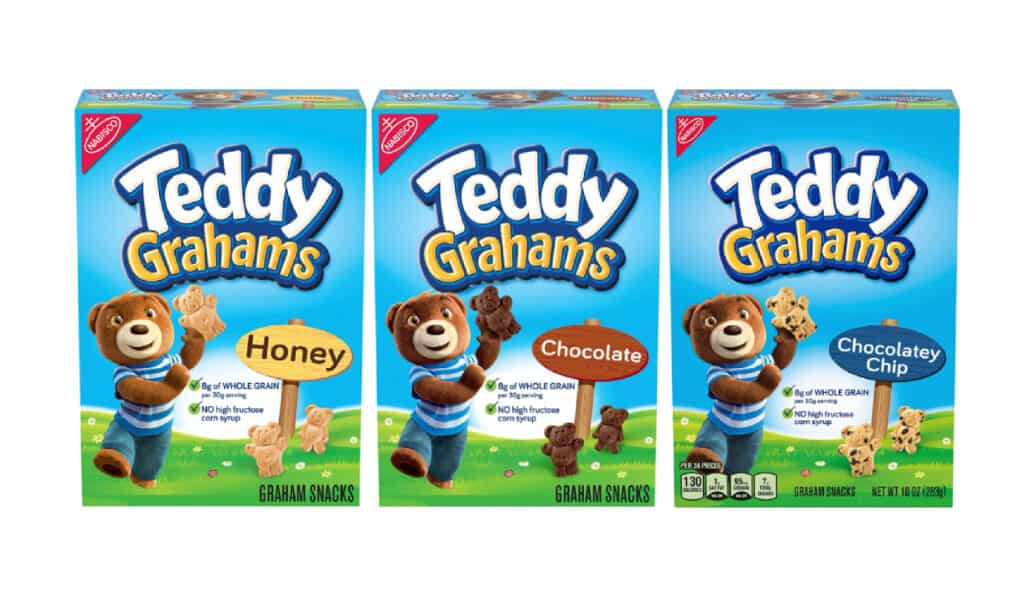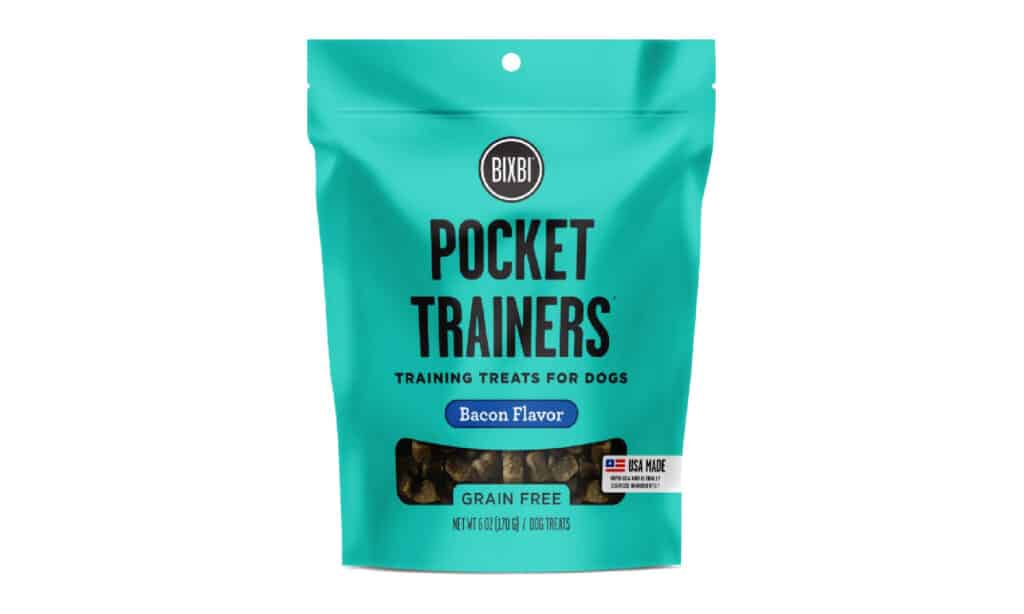As a dog owner, it’s common to wonder what human foods are safe to share with your furry friend. One snack that may come to mind are Teddy Grahams, those cute little bear-shaped graham crackers that we all love. But can dogs eat Teddy Grahams too? Before you toss a few their way, it’s important to understand the potential risks and benefits of feeding your dog this snack. In this blog post, we’ll explore whether or not Teddy Grahams are a safe and healthy treat option for your canine companion. So, let’s get started!

What Are Teddy Grahams?
Teddy Grahams are a super popular snack that both kids and adults can’t get enough of. These little crackers are shaped like cute little teddy bears and come in a variety of tasty flavors like honey, chocolate, and cinnamon.
The Nabisco company came up with Teddy Grahams in the 80s as a fun and convenient snack for people to enjoy anytime, anywhere. They were an instant hit and now they’re a must-have in many households all over the country.
One of the reasons people love Teddy Grahams so much is because they’re not only delicious but also pretty healthy compared to other snacks out there. They’re made with whole grain flour, have no trans fats, and usually have less sugar.
Although Teddy Grahams were originally marketed towards kids, lots of grown-ups enjoy them too. They’re perfect with a cup of tea or coffee or as a sweet little pick-me-up during the day.
Can Dogs Eat Teddy Grahams?
As a dog owner, you may be tempted to share your snacks with your furry friend, but it’s important to be aware of what’s safe and what’s not. If you’re a fan of Teddy Grahams, you may be wondering if your dog can have a bite too.
While Teddy Grahams are not toxic to dogs, they are not an ideal snack for them either. They are high in carbohydrates and sugar, which can lead to weight gain and dental problems in dogs. Additionally, some Teddy Grahams may contain artificial sweeteners, such as xylitol, which can be toxic to dogs even in small amounts.
If you’re looking for a snack to share with your pup, there are better options out there. Many fruits and vegetables, such as apples and carrots, are safe and healthy for dogs to eat in moderation. Just be sure to cut them into bite-sized pieces and remove any seeds or pits that could be a choking hazard.

Are There Any Harmful Ingredients in Teddy Grahams?
If you’re a Teddy Grahams fan, you may be wondering if there are any harmful ingredients in these cute little bear-shaped crackers. While Teddy Grahams are generally considered safe for human consumption, there are a few ingredients that you may want to be aware of.
One potential concern is the use of artificial flavors and colors in Teddy Grahams. These additives are often used to enhance the taste and appearance of processed foods, but they can also have negative effects on health. Some artificial colors have been linked to hyperactivity in children, and certain artificial flavors may contain harmful chemicals.
Another ingredient that may be a cause for concern is sugar. Teddy Grahams are a sweet snack and contain a fair amount of sugar. While a little bit of sugar is okay for most people, excessive consumption can lead to health problems such as obesity, diabetes, and tooth decay.
Finally, some Teddy Grahams may contain artificial sweeteners like xylitol, which can be extremely toxic to dogs even in small amounts. Keep Teddy Grahams out of reach to prevent accidental ingestion by your furry friend at home.
Are There Any Safe Ingredients in Teddy Grahams?
While Teddy Grahams are not specifically formulated for dogs, some of the ingredients may be safe for our furry friends in moderation. For example, many varieties of Teddy Grahams contain whole wheat flour, which is a good source of fiber and can be a healthy addition to a dog’s diet. However, it’s important to keep in mind that Teddy Grahams are a processed human food and are not a nutritionally complete diet for dogs. Additionally, many varieties contain added sugars and artificial flavors that can be harmful to dogs in large amounts. As with any human food, it’s best to limit your dog’s intake of Teddy Grahams and other treats, and to choose dog-specific treats that are formulated for their nutritional needs.
It’s important to note that while Teddy Grahams can be part of a healthy diet, they shouldn’t be relied on as a main source of nutrition. Enjoy them as a tasty snack every now and then, while also consuming a variety of other nutritious foods. And as with any food, always read the ingredient label to make sure it aligns with your dietary needs and preferences.

What Signs To Watch For If Your Dog Accidentally Ate A Lot of Teddy Grahams?
Accidents happen, and it’s possible that your dog may end up eating a large amount of Teddy Grahams by mistake. While Teddy Grahams themselves are not toxic to dogs, consuming a large quantity can lead to some health problems.
Teddy Grahams’ high sugar content can cause an upset stomach, vomiting, and diarrhea in dogs. Teddy Grahams can contain xylitol, an artificial sweetener that is highly toxic to dogs, even in small amounts.
If you suspect that your dog has eaten a large quantity of Teddy Grahams, there are a few signs to watch out for. These may include vomiting, diarrhea, loss of appetite, lethargy, and increased thirst and urination. In severe cases, your dog may also experience seizures or a rapid heart rate.
If you notice any of these symptoms, it’s important to seek veterinary care right away. Your vet may recommend a course of treatment, which may include administering fluids, medication, or other supportive care.
In conclusion, while Teddy Grahams are not poisonous to dogs, consuming a large quantity can lead to some health issues. If your dog ate too many Teddy Grahams, watch for discomfort signs and seek vet care if necessary. And as always, keep any human snacks out of your dog’s reach to prevent accidental ingestion.
When or If You Should Go To The Vet?
If you suspect that your dog has eaten a large amount of Teddy Grahams or any other human food, it’s important to monitor them closely for any signs of discomfort or illness. While not all cases require immediate veterinary care, there are certain situations where a trip to the vet is recommended.
If your dog exhibits any of the following symptoms after consuming a large quantity of Teddy Grahams, you should seek veterinary care right away:
- Vomiting or diarrhea that lasts for more than 24 hours
- Severe or bloody diarrhea
- Loss of appetite or refusal to drink water
- Lethargy or weakness
- Rapid heart rate or difficulty breathing
- Seizures or convulsions
- Signs of abdominal pain, such as whining or restlessness
In addition, if you suspect that the Teddy Grahams your dog consumed contain xylitol, which is toxic to dogs even in small amounts, you should seek veterinary care immediately. Xylitol can cause a rapid insulin release in dogs, leading to hypoglycemia (low blood sugar), seizures, and even liver failure.
If you’re unsure whether your dog requires veterinary care, it’s always better to err on the side of caution and contact your vet for advice. Veterinarians can assess your dog’s symptoms to decide if they need immediate attention or if home monitoring is sufficient.

Safe Dog-Friendly Alternative to Teddy Grahams:
If you’re looking for a safe and healthy alternative to Teddy Grahams to share with your furry friend, there are plenty of options out there. Here are a few dog-friendly snacks that are both tasty and nutritious:
- Carrots: Crunchy and low in calories, carrots are a great snack for dogs. They’re high in fiber and beta-carotene, which supports eye and skin health.
- Apples: Sliced apples are a sweet and healthy treat that most dogs love. They’re packed with fiber, vitamins, and antioxidants.
- Blueberries: These little berries are a nutritional powerhouse, loaded with vitamins and antioxidants that support brain and immune health.
- Green beans: Cooked or raw, green beans are a tasty and healthy snack for dogs. They’re low in calories and high in fiber, which can help promote digestive health.
- Pumpkin: Canned or cooked pumpkin is a great snack for dogs. It’s high in fiber and can help regulate digestion, while also providing vitamins and minerals.
Remember to always cut fruits and vegetables into bite-sized pieces and remove any seeds or pits that could be a choking hazard. As with any new food, introduce these snacks gradually and in moderation to prevent digestive upset. And as always, consult with your veterinarian if you have any concerns about your dog’s diet.
Healthy Store-Bought Options:
In conclusion, while Teddy Grahams can be a tasty treat for humans, they are not the best snack for our furry friends. They are high in sugar and carbohydrates, which can lead to weight gain and dental problems in dogs. Additionally, some Teddy Grahams may contain artificial sweeteners like xylitol, which can be toxic to dogs even in small amounts.
There are many safe and healthy alternatives to share with your dog. Fruits and vegetables like carrots, apples, blueberries, green beans, and pumpkin can be a nutritious and delicious treat for your furry friend.
Remember to always read the ingredient labels and consult with your veterinarian if you have any concerns about your dog’s diet. And if you suspect that your dog has consumed a large amount of Teddy Grahams or any other human food, monitor them closely for any signs of discomfort or illness, and seek veterinary care if necessary.
In the end, the health and well-being of our beloved pets should always be our top priority. By being mindful of what we feed them and providing them with nutritious snacks and treats, we can help ensure that they lead happy and healthy lives.
~Lindsie



